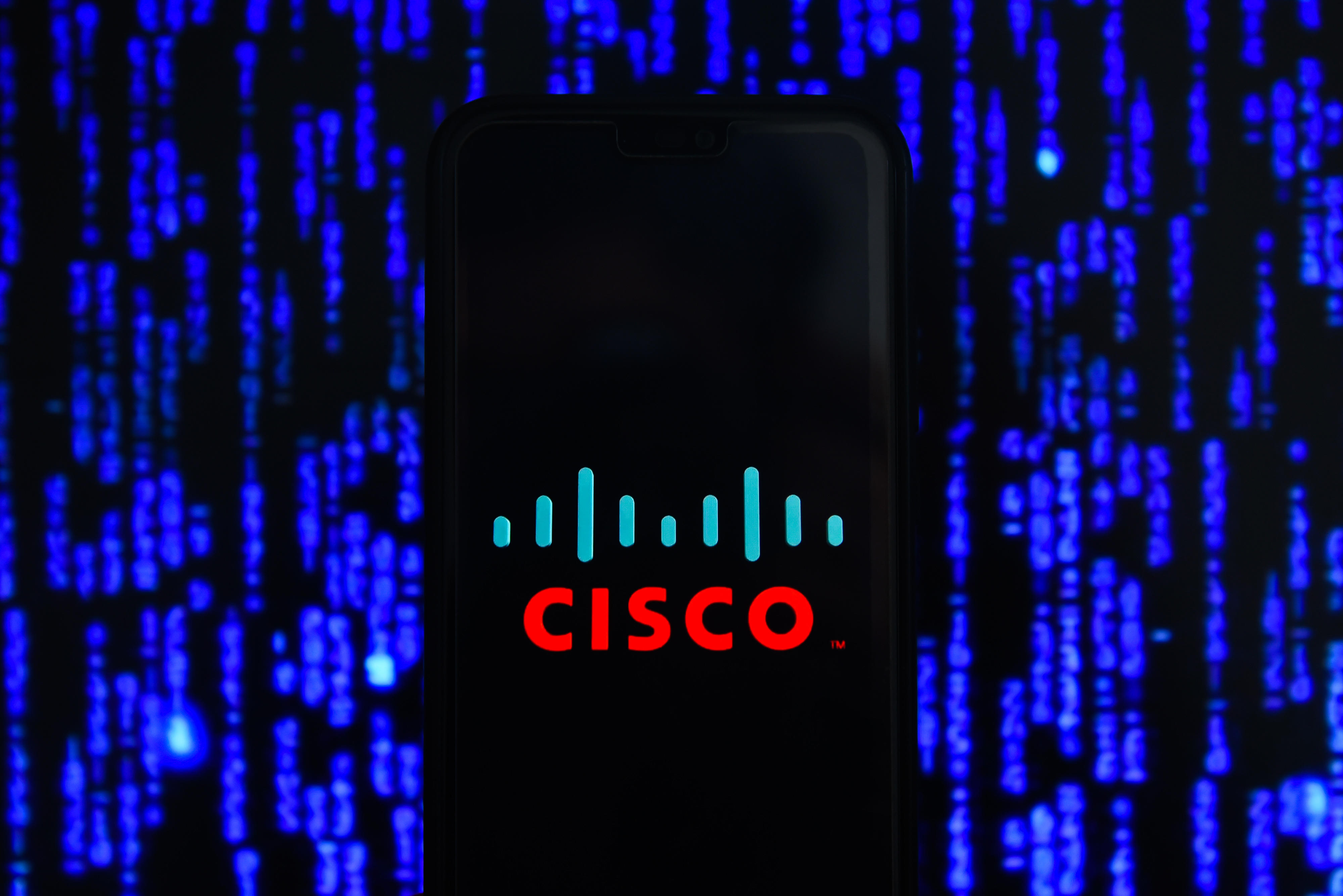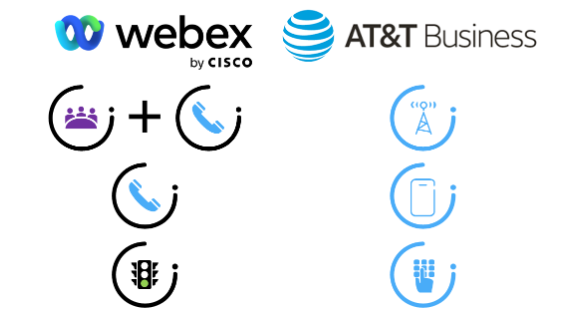At Cisco Live, AT&T and Cisco announced a new version of Webex Go in which corporate-liable AT&T phone plans can be easily integrated with Webex Calling plans to provide Webex users a single identity based on the mobile phone number of their AT&T phone.
One Number Works on Any AT&T or Webex Device
Because this solution is integrated with AT&T’s IP Multimedia Subsystem (IMS) – which is part of its mobile core network – Webex Calling users will have a single phone number that can be used on the AT&T mobile handset, on a Webex desk phone, and in the Webex app running on personal computers and tablets. Thanks to this integration, all mobile phone calls become subject to an organization’s compliance policies as established in Webex Control Hub for Webex Calling, including call recording, call logs, and call analytics.
Mobile phone users will make and receive calls using the wireless phone’s native dialer; these mobile calls will traverse the AT&T VoLTE or 5G mobile network, providing HD audio. Users wishing to escalate the phone call to a Webex meeting can easily do so by “elevating” the call to Webex.
AT&T is also enabling a fast track capability for Webex, which prioritizes Webex data and video media over AT&T’s wireless data network. This “fast track,” coupled with a direct interconnect between AT&T’s network and Cisco’s network, means that Webex meetings and video streaming will perform better when using Webex on an AT&T mobile device than it will using competitive carriers.
Unanswered calls – directed to the AT&T mobile phone or to a Webex device or app – will have a single voice message store. Post launch, SMS on the mobile handset will be integrated with Webex messaging.
e911 is handled as follows: if an emergency services phone call is initiated from the mobile handset, then AT&T’s 911 service handles the call; otherwise, if a phone call is initiated from a PC, desk phone, or the Webex mobile app, Cisco’s Webex Calling 911 service handles the call.
Unlike competitive offers, there is no monthly recurring per-user charge. Companies simply need to order their AT&T corporate liable phones and phone numbers, subscribe to Webex Calling, import the mobile phone numbers into Webex Control Hub, and assign the numbers to Webex Calling users. No end user activation is required; activation occurs automatically once the AT&T mobile phone number is assigned to a Webex Calling user. This is a simple and elegant onboarding solution that incurs no additional monthly fees beyond the AT&T phone subscription and the Webex Calling subscription.
This solution is expected to become generally available in Q4 of 2023. Upon launch, AT&T will brand the solution AT&T Cloud Voice for Webex Go; Cisco will brand it as Webex Go by AT&T.
Cisco Now Supports Both BYOD and CRU
Before this announcement, Cisco had a version of Webex Go that allowed users to bring their own device (BYOD) and use an eSIM in the mobile phone for Webex Calling. In that scenario, the user would have their own phone, their own phone number, and data plan from their preferred mobile carrier; a second Webex Calling phone number would be provided by Cisco. In this BYOD version of Webex Go, phone calls traverse the Cisco mobile network, while any meetings and video data would use the data plan from the user’s personal number. The BYOD version of Webex Go is still available from Cisco.
By partnering with AT&T to create this new IMS core-based Webex Go offer, Cisco becomes the first telephony-enabled UCaaS provider to support both corporate responsible user phones (CRUs) and bring-your-own-device phones using either of Webex Go’s two operating models. This flexibility allows enterprises to use the Webex Go model that most closely aligns with their business philosophy and operating principles.
Evolving to Business Mobile Convergence
This new offer is an example what Omdia’s Digital Workplace research group calls Business Mobile Convergence (BMC), which is an evolution over its fixed-mobile convergence (FMC) predecessor. While FMC was developed to try to provide seamless handoff between a PBX extension and a mobile phone, BMC is different because it is built on a rich digital collaboration and productivity platform with unified communications and collaboration (UC&C) at its core. BMC will drastically change the way that mobile services are provisioned and consumed by the enterprise, with positive implications for both the employee experience and the solution management experience in terms of mobile management and security.
Business mobility (i.e., being a productive employee regardless of location) is complex, and catering to more mobile-centric work styles is a digital competency that enterprises must get right. Connectivity, management, security, and productivity are all critical mobile competencies that organizations need to consider when developing a strategy that optimally enables a flexible and mobile workforce, including frontline workers. A key organizational challenge is managing disparate infrastructure and services, as these often rely on multiple management and administration portals. In addition, eliminating data silos is a critical need if businesses are to obtain any meaningful mobile usage and adoption metrics to help guide future strategy.
There has heretofore been lack of convergence between the tools and infrastructure supporting mobile users and those supporting collaborative workers. The integration of the AT&T phone’s calling statistics into Webex Control Hub helps organizations provision, manage, and analyze mobile workforce solutions from a single pane of glass.
This is an example of BMC in which greater synergy exists between those responsible for enabling and managing workplace mobility (people) and the richer integration between mobile infrastructure and digital capabilities (technology). This strategic, unified approach Cisco and AT&T are implementing is an essential step toward better supporting the mobile workforce, IT managers, and business leaders within a modern business operation.
Hybrid Work is Here to Stay
Hybrid work (commuting into the office for parts of the working week) and fully remote work have become established practices for many organizations. This flexibility to effectively work remotely or in an office depends on the right mix of organizational culture, business processes, and technology.
Omdia believes that solutions like AT&T Cloud Voice with Webex Go will ultimately be adopted by the majority of knowledge workers, who already carry a mobile device, and by leading organizations for enabling their frontline workers. Both will be well served by a business mobile communications and collaboration solution integrated on both the front end and the back end.











